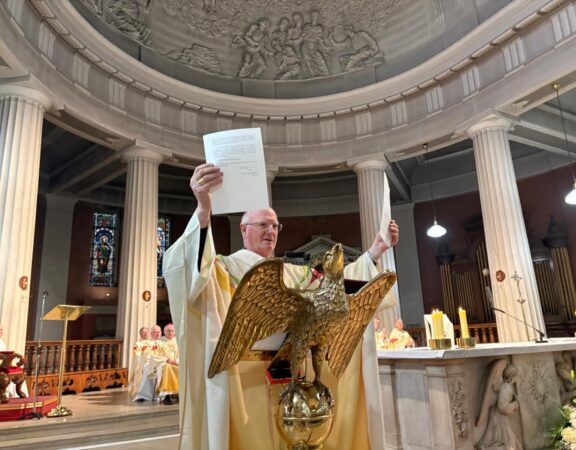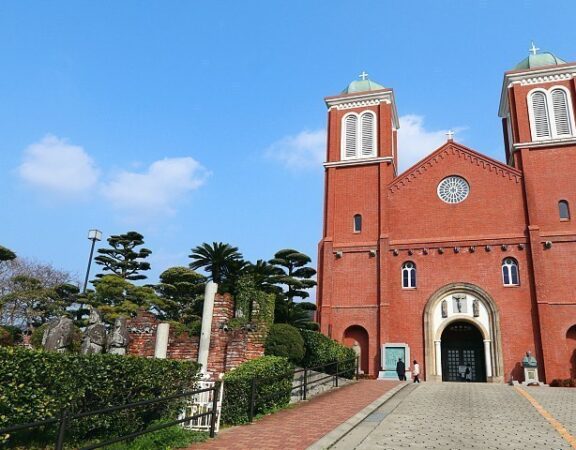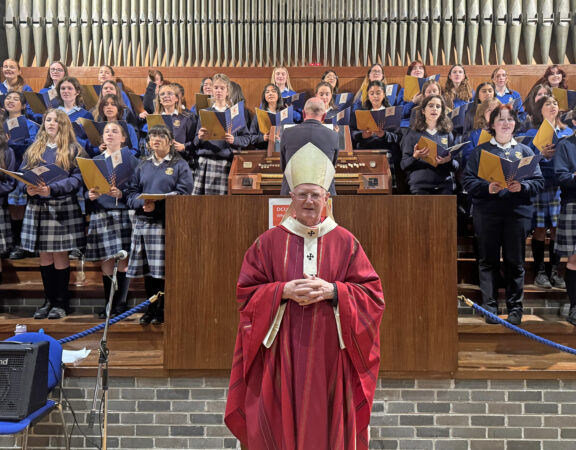Homily at Autumn Liturgy Seminar, Clonliffe College October 1st
Our Annual Autumn Liturgy seminar takes place at a particularly important moment as we prepare for the introduction of the English translation of the New Roman Missal.
This moment is important not just because of the translation, but because it is a natural moment in which change makes us reflect more carefully and with greater attention on how we celebrate our liturgy and especially how we celebrate and live the Eucharist.
At the Synod of Bishops in Rome on the Eucharist in the life and Mission of the Church, some years ago, much attention was given to what was called “the art of proper celebration and the full active and fruitful participation of all the faithful”.
The theme of the Eucharistic Congress is enlightening on this point: “Communion with Christ and with one another”. It is a theme which puts into focus the social consequences of the Eucharist. Gathering together for and sharing in the breaking of the bread creates a Eucharistic community, which then witnesses to and creates a sense of sharing within the wider community.
This is what happened in the early Church. In the Acts of the Apostles we see how the believers gathered to listen to the word God and to the teaching of the apostles, and then to share in the breaking of bread. But from that sharing in the breaking of the bread came a culture of sharing, where no one was left in need and which brought about an interest and a respect for the Christian community and indeed an increase in the number of believers.
“Communion with Christ and with one another”: communion with Christ generates a unique form of communion with one another. But it would be wrong to think that communion with Christ takes place in the liturgy and then that communion with one another takes shape afterwards in society.
There is also a sense in which the communion with Christ in the Eucharist cannot be understood adequately without a sense of communion with one another which takes place within the celebration of the Eucharist; and that this fact cannot but influence the manner in which we celebrate the Eucharist. The manner in which we celebrate together draws its interpretation from our communion with Christ but we cannot celebrate the Eucharist except in communion with one another. Both dimensions belong together. The bread of life is broken and shared.
The celebration of the Eucharist is a celebration of the believing community. It must express that community dimension. There is no room for solo runs within the Eucharist. Where a soloist sings alone or a choir sings or an organist plays, this is a service to the community dimension of the celebration of the Eucharist, not a performance. It serves to foster prayerful participation, it helps to create an atmosphere of silence and reflection when this is opportune; it can also reflect the joy and the worship of the community. But it does not replace the fundamental role of the Christian community as one which worships also through music.
Certain musical parts in the liturgy belong fundamentally to the entire community. When soloists or choirs or even celebrants usurp that role and become protagonists of themselves, then they distract from and distort the central mystical character of the liturgy.
The other day I was at a celebration in the main College Chapel in Maynooth and walking along the corridor which leads to the chapel I was once again struck by the fact that the corridor is lined with individual altars at which, before the introduction of concelebration, each priest celebrated individually what he may well have called “my mass”.
There are occasions in which a priest may find himself in a situation in which he celebrates Mass with just a server. But the celebration of the Eucharist is never a private act and cannot be conducted by the priest as a private act. Neither can any of us – whatever our position in the Church – think that we ourselves shape our participation in the liturgy just according to our own tastes.
The celebration of the liturgy must respect the distinctive roles of each participant; no one has the right to take over or restrict the role of another or of the Christian community. This applies to all liturgies, even to daily Mass.
The Eucharist is not ours to shape as we wish. The Eucharist is a gift to us. The Eucharist is the Mystery of Faith, in which the events of Jesus’ life and the Paschal Mystery are celebrated in relation to the entire history of salvation, especially the Old Testament. We cannot understand the ritual of the Eucharist without an understanding of how the history of salvation evolved over the centuries.
Liturgy is prayer. Active participation of the laity in the liturgy comes not simply from doing things but rather from fostering fruitful identity with the mysteries being celebrated and from a realisation that these mysteries are not constructed by us but that they actually change our lives through our participation in them.
One of the reasons why the Second Vatican Council had such a vibrant effect on the life of the Church is that the changes it proposed occurred at a time when people welcomed change and our culture was a culture of rapid change. One of the negative effects was that the culture of change may have been a weakening our sense of tradition and heritage. This can be seen in the way some of the transformation of older Churches at the time of the Council was hasty and at times rather shabby. There was a sense that with the Vatican Council the entire sense of tradition and heritage was relativised. There was a sense that we could do with the liturgy as we wished, whereas there are dimensions of the liturgy which no one – not even the Pope – can change.
Renewal in the liturgy must make the liturgy a liturgy for our times, but we can never overlook the fact that the liturgy is the celebration of the history of salvation and of God’s saving intervention in a world whose history – and still today – is also marked by signs of good and evil, light and shadows. We have to discern which elements of our culture really belong within the nature of the liturgy of the one Church.
Liturgy is prayerful celebration of the mysteries of redemption; it is never performance. A culture of activity may have led to the idea that participation was simply doing things, whereas silence and prayerful listening are just as important as speaking.
This morning we celebrate the Feast of Saint Therese. It is a celebration of quiet humility and a prayerful childlike devotion. Childlike devotion is a devotion which recognises our dependence on God and which leaves no room for personal arrogance. But a child also has that deeper ambition to grow, to be bigger, to be fully the person that God wishes them to be. Childlike devotion is not just a devotion of dependence but recognition that we must grow in our spirituality not just through self-affirmation but through being carried and supported not just in doing but in quiet reflection.
In a hectic culture, liturgy must be a place where people can pause and reflect and be caught up in the tradition of the prayer of the Church.
I thank each and every one of you for what you do in our parishes right across the diocese for the renewal of liturgical devotion. I hope that this Seminar has been an occasion which will help spread renewed liturgical devotion. Renewed liturgical devotion through prayerful identity with the mysteries celebrated in the Eucharist will then in its turn lead to renewal of the Church, to a renewed communion with Christ and with one another. ENDS







